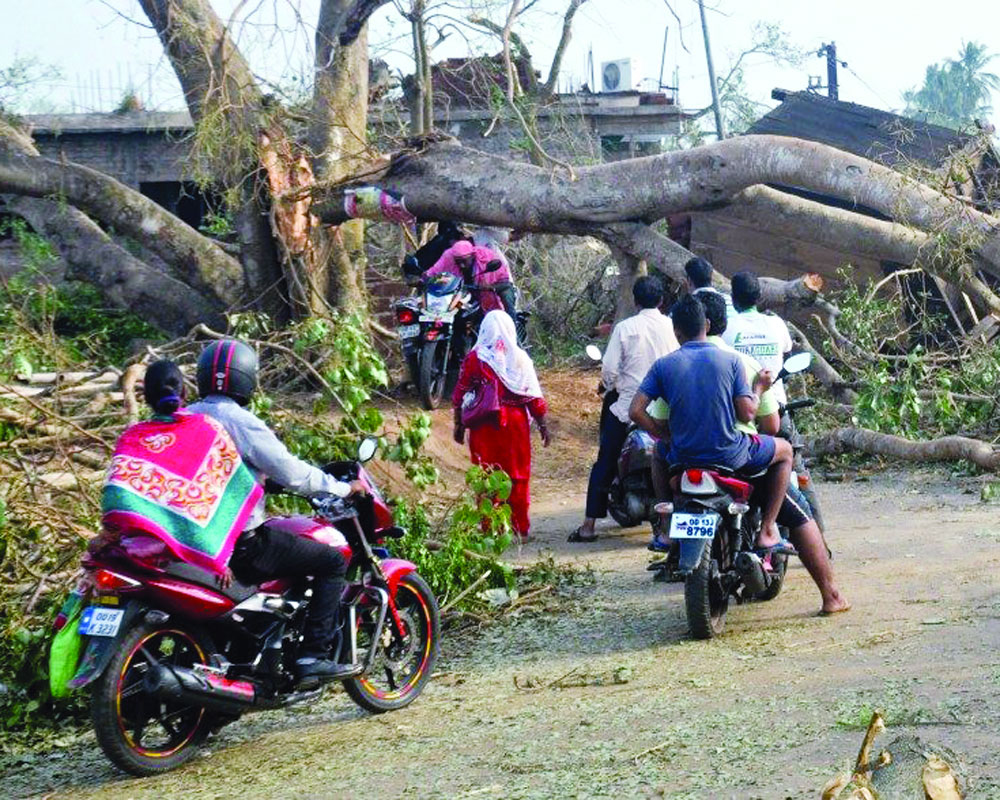Yes, the evacuation was spectacular. But there can be no complacency about post-disaster management
While there are no two ways about our mammoth effort in minimising human casualties with probably modern India’s biggest pre-emptive evacuation plan before the dreaded cyclone Fani struck, we have obviously not been as sharp about post-event management of human lives and rehabilitation. Fact is the operational efficiency of existing disaster drills is not enough to counter the ecological, financial and infrastructural damage caused by Fani, the destructive scale of which has been much larger than ever anticipated. So though deaths have been few, the lives of over 1.5 crore affected people may not return to normal very soon as everything that they built over the years and the world as they knew it have all but flattened. With power grids in disarray, roads cut off in places, food and water supply disrupted and most importantly, the capital Bhubaneswar in a shambles, reconstruction is a taller order. Restoring the basics of power and water may take up to a week in some places. Imagine, it could take up to a month to restore power supply to the entire Puri district! People are crowding Bhubaneswar station to charge their communication devices as it is the only place that has a power supply. Providing food, shelter and medical care is immediate priority and with hospital buildings and other structures decimated, there’s no roof over people’s heads quite literally. About 80,000 km of low tension power lines and 64,000 distribution transformers cannot be repaired overnight and with the nerve centres of Odisha — Cuttack, Puri and Bhubaneswar — crippled, Odisha is staring at a much much longer road to recovery. In short, disaster preparedness along Odisha’s coast should now mean a re-assessment of how basic infrastructure has been planned along these cities all this while and how they can be saved, reconfigured or brace up for the future. For climate change-induced extreme events mean that cyclones will only become more intense in the Bay of Bengal.
And this is the real problem, understanding the intensity. While the IMD and satellites predicted the superstorm with a fair bit of accuracy, the response mechanism probably erred on visualising how the gale force would manifest itself. Most rescue teams had factored in a tidal wave surge swamping the coastline, that being the traditional impact that people are used to and probably resulted in the spectacular evacuation drive. Instead, the wind speed, at 200 kmph, was very high and took down everything in its path. Which means that power cables now on have to be embedded in the earth than strung to overground poles. Such a measure helped Puducherry, which was hit by a severe cyclone in 2011, restore power in less than 12 hours. Odisha faced a similar problem during Phailin and considering the lay of its land, will have to permanently invest in disaster risk-reduction measures. Building zones need to be recodified for height and structural stability, a system of common underground shelters needs to be executed and more out-of-the-box solutions developed with disaster mitigation experts. With thousands of trees uprooted across Lake Chilika and marine life affected because of heightened salinity of its waters, the change in biodiversity maps could take decades to overturn and will drastically change livelihoods and the local economy. It is for such rapidly changing climate impacts that the Government passed the National Disaster Management Act (2005). It envisaged a comprehensive framework and introduced a management approach called Incident Response System (IRS) which each State was expected to follow. A national guideline was also issued subsequently in 2010. Had these been followed in spirit, they would have resulted in better utilisation of resources. The private sector with interests in this belt should partner with the government in recovery and rejig efforts and make disaster risk reduction a part of its CSR. Yes, we have managed to evacuate well. But in times of climate change, there is no room for complacency in meeting immediate goals. We cannot just go by past experiences, we have to look far ahead and use a predictive methodology. Lives have been saved no doubt but robbed of their past, we have not given them answers what to do next. They are refugees in their own land.


























